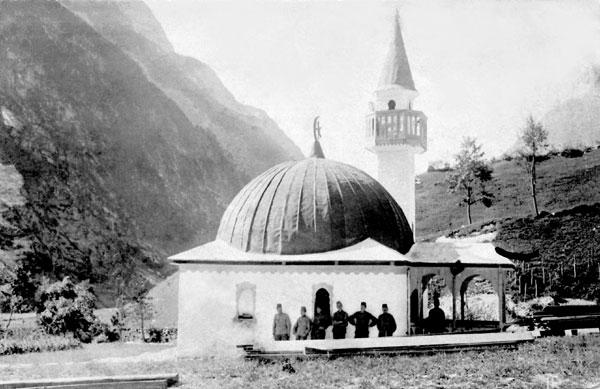
Slovenia’s Soča River Valley is a magnet for travelers and is becoming known as one of Europe’s premier destinations for those seeking an active vacation. Just over a century ago, however, the valley was the unlikely location for a mosque – a place of worship built during some of the bloodiest fighting of World War I.
This spectacular part of the Alps was ground zero for Isonzo Front, which pitted Austro-Hungarian soldiers against Italian troops in unforgiving terrain. Up to a million of young men lost their lives during the conflict, but behind the front lines, soldiers of various ethnicities and faiths tried to maintain a semblance of normalcy despite knowing that they could be called to battle at any time.
It was in these difficult circumstances that homesick Bosnian soldiers, who had a reputation for being brave fighters in the Austro-Hungarian army and were much feared by their Italian enemies, decided to build themselves a spiritual home away from home. In late 1916, a unit based from the town of Mostar constructed a full-scale mosque near the town of Log pod Mangartom. Made from stone, much like traditional homes in the area, the mosque became the first Islamic place of worship in the territory of modern-day Slovenia. It gave comfort to fez-wearing soldiers from a culturally distant corner of Austria-Hungary.
The mosque provided spiritual nourishment for Muslims throughout the conflict, but after the war, the area became a part of Italy, the soldiers returned to Bosnia, and the mosque lost its faithful. The condition of the building deteriorated and locals even used some of its stone as material for their own homes. The mosque was demolished in the early 1920s. Only a small number of preserved photographs now testify to its existence.
In recent years, some have proposed that the mosque be rebuilt, but even if those plans are never realized, a unique historic memory will remain – a recollection of a time when one of the bloodiest conflicts the world has ever known brought soldiers of various backgrounds to a remote corner of the Julian Alps.

































































